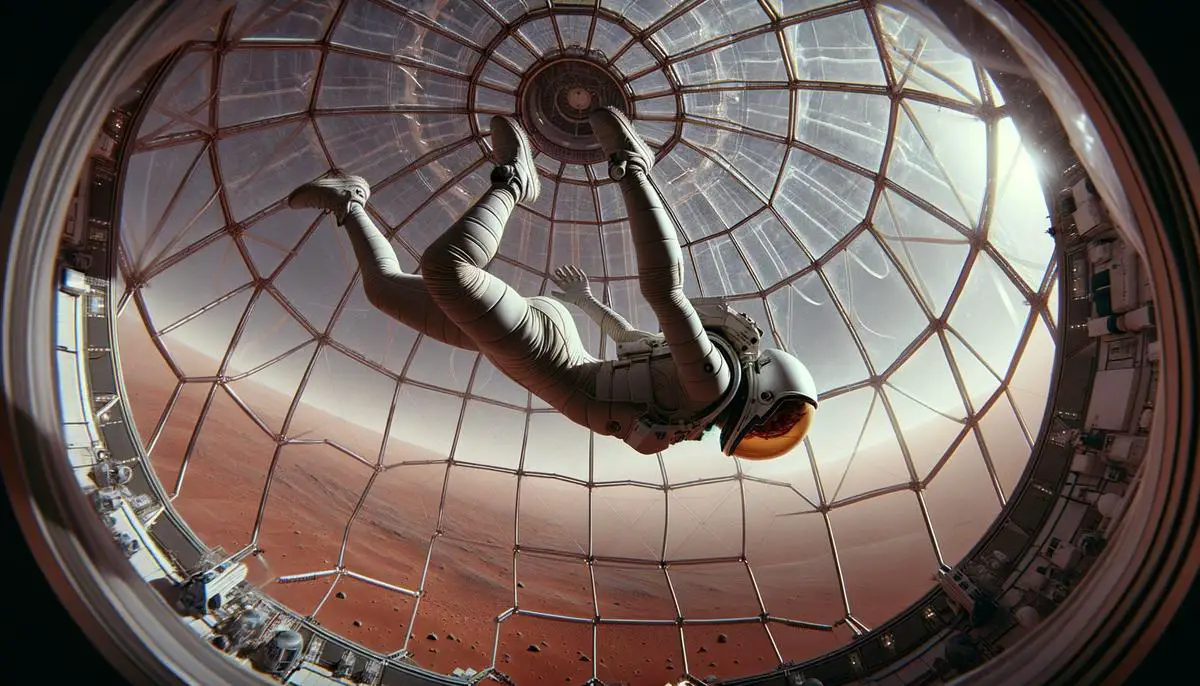Historical Context
Years later, the concept of zero-gravity or microgravity sports evolved further with astronauts on the International Space Station (ISS). They held their own makeshift Winter Olympics, engaging in activities like space skiing, zero-G luge, and weightless figure skating. These events, although meant for fun, showcased the unique challenges and opportunities presented by microgravity environments for sports.
Japanese astronaut Soichi Noguchi even donned a pair of short space skis for his slalom and jump events, adapting the skiing experience to the confines of the ISS. Similarly, relay races, medicine ball tosses, and mock gymnastics routines have been adapted for zero gravity, inviting us to rethink how we define and engage with sports.
The introduction of 'astrolete' — a term combining astronaut and athlete — highlights the emerging role of sports in space exploration. These individuals, with the core skills of an astronaut and the spirit of an athlete, represent a new frontier in competitive sports. Their participation in activities like tossing hefty bags of water around or engaging in relay races across the space station illustrates the potential for organized sports in microgravity environments.
The Space Games Federation is taking these experiments and activities to the next level by developing new games designed specifically for low or microgravity conditions. Their efforts hint at a future where sports in space are not just a pastime for astronauts but organized, competitive events watched by audiences back on Earth.
Looking at historical engagements with sports in space, it's clear that while the physical playfields and rules differ vastly from Earth-based sports, the spirit of competition and camaraderie remains very much alive. These pioneering experiences serve as crucial stepping stones towards a future where interplanetary sports could become a reality.
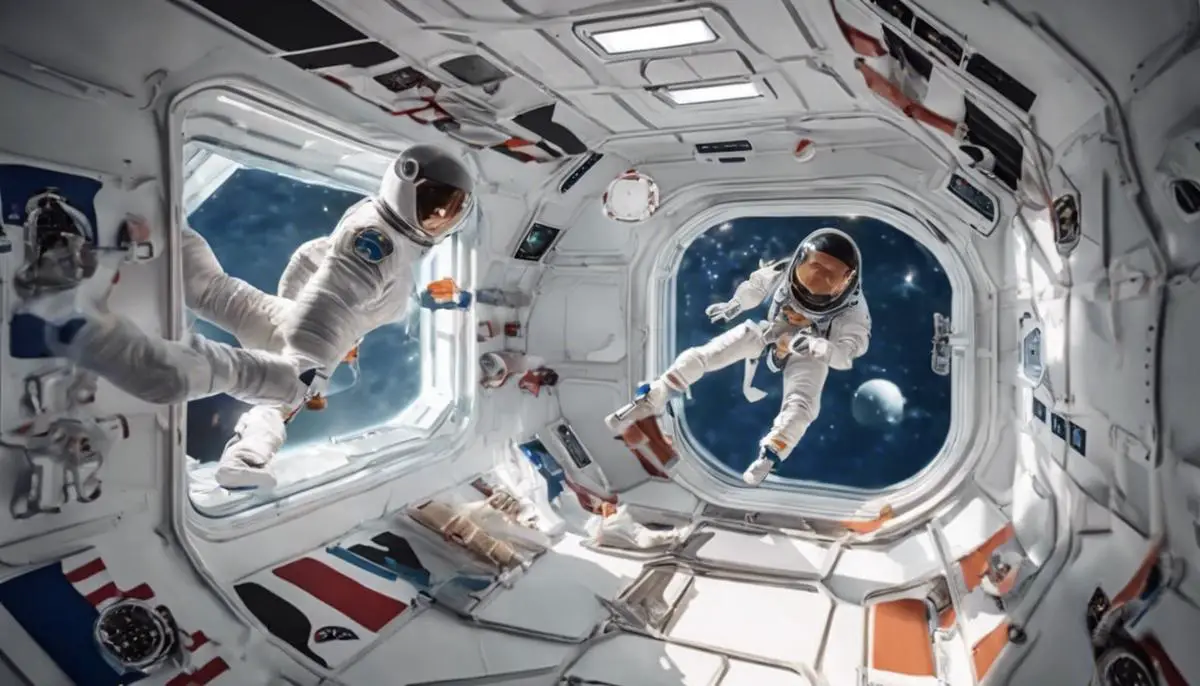
Physical and Technical Challenges
The endeavor to adapt and create sports suited to Mars' distinctly Martian environment introduces a complex array of physical and technical challenges, with the planet's reduced gravity – about one-third of Earth's – taking center stage. This gravitational difference alters human physiology in ways that are both advantageous and precarious for athletic pursuits. Muscular atrophy and bone density loss, difficulties faced by astronauts after extended periods in microgravity, might be mitigated on Mars by its slighter gravitational pull, though not entirely avoided. Specialized training regimes that focus on preserving muscle mass and skeletal health would be imperative for athletes, or as they might come to be known, 'marsletes'.
The influence of Martian gravity extends to the quintessential element of any sport: the equipment. On Mars, objects weigh less and fall slower, turning a straightforward game of catch into a patience-testing endeavor as the ball lazily arcs through the air. Adjusting the mass and aerodynamics of sports equipment to accommodate Martian physics demands innovation and meticulous engineering. Equipment must be recalibrated or redesigned to balance playability with safety, ensuring that sports remain engaging for participants and spectators alike.
The prospect of outdoor events unfolds additional layers of complexity. The thin Martian atmosphere, primarily composed of carbon dioxide, entails the prioritization of suit technology that can simultaneously safeguard athletes from the cold, vacuum-like conditions and allow them the mobility necessary for sports. The creation of advanced environmental suits, equipped with temperature control, mobility aids, and perhaps even augmented reality systems for in-suit navigation and biometric monitoring, emerges as a paramount technical challenge.
Venues, too, would require a major rethinking. Indoor arenas, perhaps housed within larger biodomes, represent a feasible short-term solution, providing controlled environments that shield athletes and fans from Mars's harsh exterior. Constructing these structures would necessitate materials that withstand Mars's regolith and extreme weather, alongside architectural designs that optimize space and energy efficiency.
The transition of sports to Mars challenges not only our physical adaptability but our capacity to innovate. It calls for a holistic reimagination of how sports are conducted, from athlete preparation and equipment design to gearing up stadiums for Martian hospitality. This pioneering phase carries the dual requirement of ensuring athletes' health and safety while preserving the essence and competitiveness of sports.
In embracing these challenges, we inch closer to a future where Mars doesn't merely host life but enriches it with the cultural and social tapestry that sports weave into human history. Each hurdle cleared and each game adapted strengthens our interplanetary camaraderie, symbolizing not just human resilience but our relentless pursuit of joy, even millions of miles from our home planet.
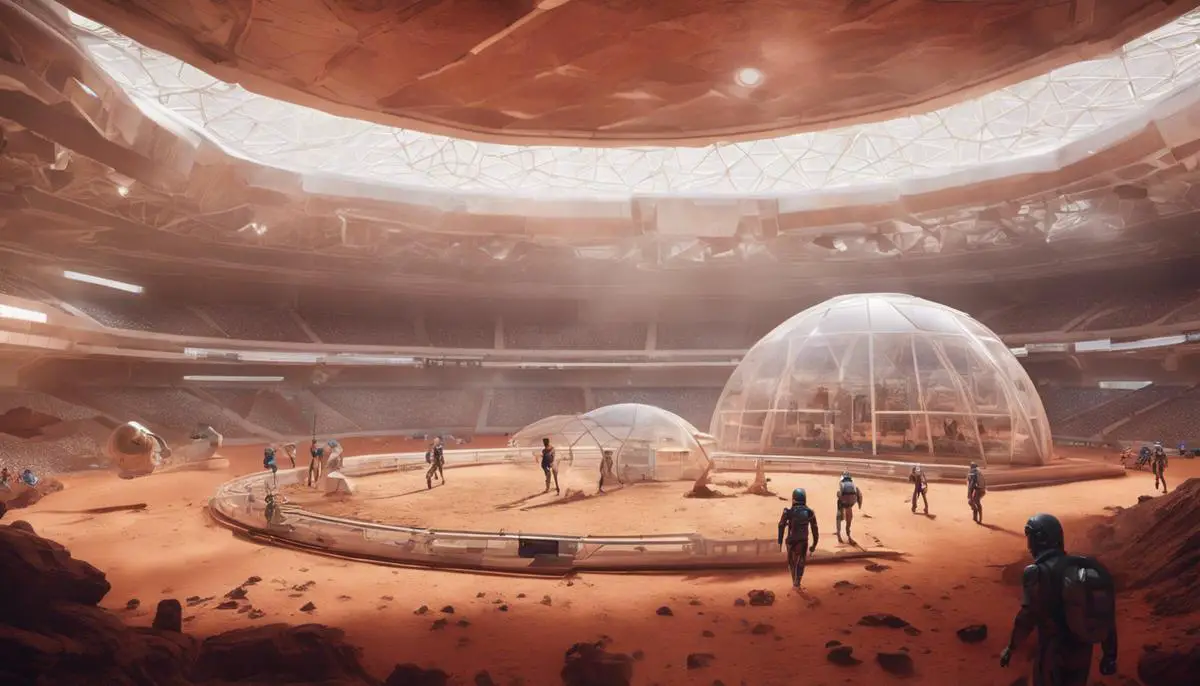
Potential Sports and Game Design
The Martian landscape—an expansive theatre of regolith and rock, under a pink sky—while seemingly inhospitable, presents a new frontier not just for exploration but for the birth of novel sports and the adaptation of earthly games to its sands. The unique environmental conditions of Mars invite a reconsideration of the dynamics of play, from the familiar terrestrial to the exhilaratingly extraterrestrial.
Inspired by the work of the Space Games Federation, one can envision a host of innovative sports tailor-made for the Red Planet. Magnetic ball games could exploit Mars's decreased gravity to create a three-dimensional playing field where athletes, equipped with magnetic boots, could maneuver across juxtaposed surfaces to score points—a cosmic ballet of strategy and agility defying the very notion of up and down.
Space dodgeball could be reimagined in the Martian context by incorporating wearable tech suits that augment players' movement capabilities, allowing for jumps and dives that seem to suspend the participant in mid-air before gravity slowly claims them back. The balls, denser and equipped with tracking sensors, could provide data feedback in real-time, offering a matrix of game evolution that is as much about sport as it is about participating in an interactive spectacle.
Traditional Earth sports must not be ignored but can be radically transformed in this new setting. Soccer could evolve into a variant where the ball, lighter but larger, is kept aloft by Martian winds in large outdoor arenas. Goals scored not just in nets but through towering arches or hoops positioned at various heights and depths in the field, amplifying the challenge and spectacle.
The reduced gravity field of this alien world would undoubtedly transform athletics – long jump and high jump records would not just be broken but shattered, setting stages for performances that verge on the superhuman. Yet, alongside the marvels of augmented physical prowess, precise calibration of exercise regimens must ensure such feats do not compromise the athletes' welfare.
Perhaps most captivating is the potential for hybrid sports that merge human capabilities with rover technology. Imagine a sport where participants control rovers in a game of strategy akin to robot soccer or battlebots, blending the cerebral challenge of chess with the unpredictabilities of racquetball. The rovers, designed for Mars's terrain, navigate pits of sand and hurdles of rock to capture objectives or defend territories, all while human teams strategize and adapt to an ever-evolving field of play.
To spearhead these games into reality calls for a fusion of engineering brilliance with sporting spirit—a multidisciplinary endeavor where scientists, athletes, and technologists converge to codify new rules of play, develop equipment, and innovate training methodologies suited for Martian conditions.
Drawing from these speculative concepts underscores not merely the continuation of terrestrial traditions but rather the inauguration of an interstellar chapter in the annals of sports. These future games speak to a broader ambition; one where humanity's competitive spirit and quest for play find a harmonious echo in the crimson expanse of Mars, fostering community, resilience, and enchantment in humanity's next cradle.
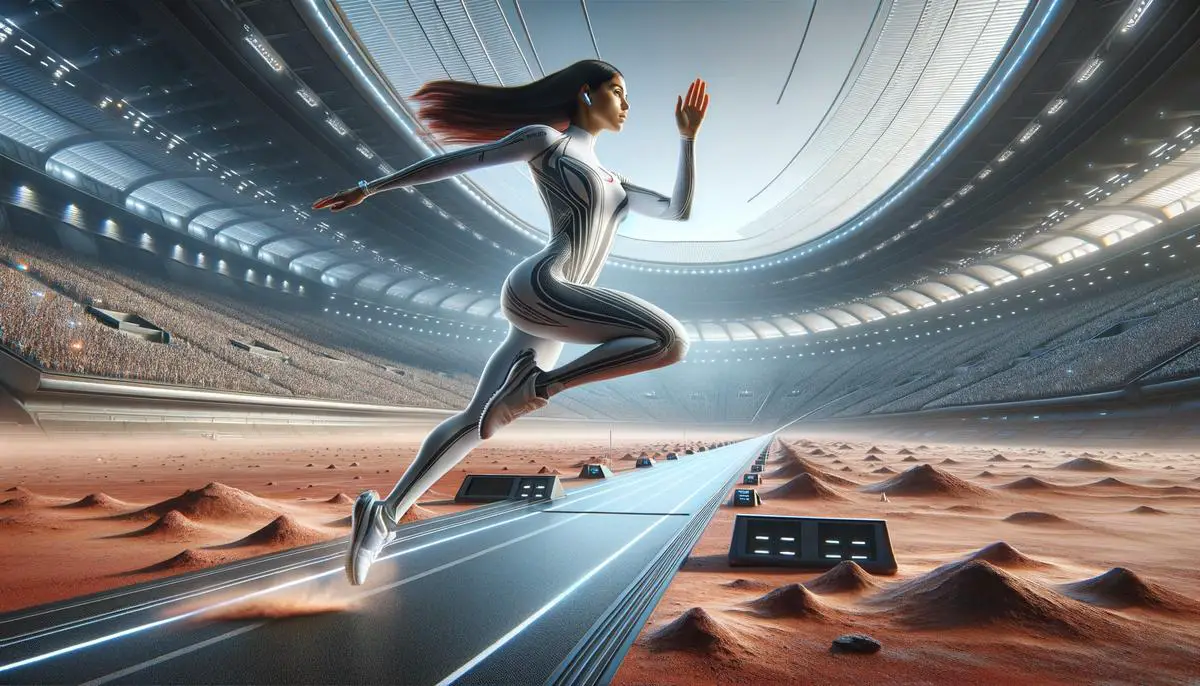
Sociocultural Impact
Introducing sports into a Martian society, an endeavor that might seem frivolous at first, holds profound potential to bolster not only the physical well-being of a nascent colony but its socio-cultural fabric as well. The very nature of sport—its capacity to unite individuals behind a common cause, to instill a sense of achievement and camaraderie, and to serve as a universal language bridging disparate backgrounds—could play a pivotal role in the mental and emotional health of those pioneering life on Mars.
In the constrained and often monotonous environment of a space colony, sports offer a welcome diversion—a means to break the sameness of day-to-day life with spikes of excitement, anticipation, and shared experiences. The thrill of a match watched together, whether in person within the bio-domed arenas or streamed to personal habitats, can foster a sense of community and connection among residents. For a population isolated from Earth, these communal moments of joy and despair, triumph and defeat, become shared touchstones of a collective identity—a Mars distinct from Earth not just by geography, but by the shared experiences of its people.
The entertainment value of sport in a Martian colony transcends mere distraction. In the crucible of competitive sports, stories emerge—narratives of underdogs triumphing against the odds, of personal strife overcome, of records shattered. These stories, relayed back to Earth, serve dual purposes. They humanize the remote, intangible concept of Martian colonization, lending a face and a heartbeat to a venture often abstracted into technological feats and astronomical costs. They also furnish aspiring colonists with attainable heroes. Thus, sports become a conduit for inspiring future generations about the possibilities of space exploration and living.
The role sports play in maintaining physical and mental health in a Martian colony cannot be overstated. The physical benefits of regular exercise are well-documented—ameliorating the risk of muscular atrophy and bone density loss due to microgravity conditions while also enhancing cardiovascular health. Yet, the benefits transcend physical gains. Participating in sports can alleviate symptoms of stress, anxiety, and depression—common challenges in the high-stake, isolated conditions of space living. The discipline of training, the mental fortitude required in competition, and the social engagement involved in team sports collectively nurture psychological well-being imperative for life in such an extraordinary setting.
Given the technical challenges inherent in off-Earth sports—an environment where even the act of kicking a ball requires profound recalibration—participants and spectators alike are drawn into a culture of innovation and problem-solving. This culture fosters a spirit of creativity and resilience, as marsletes and engineers alike strive for solutions to the unique challenges posed by Martian sports. This creative problem-solving ethos, born on the playing fields, has broader implications for facing the myriad challenges of establishing a prosperous human presence on Mars.
The sociocultural tapestry woven by integrating zero-gravity sports into Martian society will be complex, rich, and multifaceted. From providing a crucial outlet for communal entertainment and personal fulfillment to fostering a resilient and innovative community ethos, sports stand to significantly influence the quality of life on Mars. They emblemize not just an import from Earth but an adaptation and flourishing of human culture under the sky of another world. In facing forward to this horizon, humanity finds an opportunity to reimagine its relationship to sport—not just as pastime or profession but as pivotal pillar supporting the health, happiness, and unity of future Martian societies.
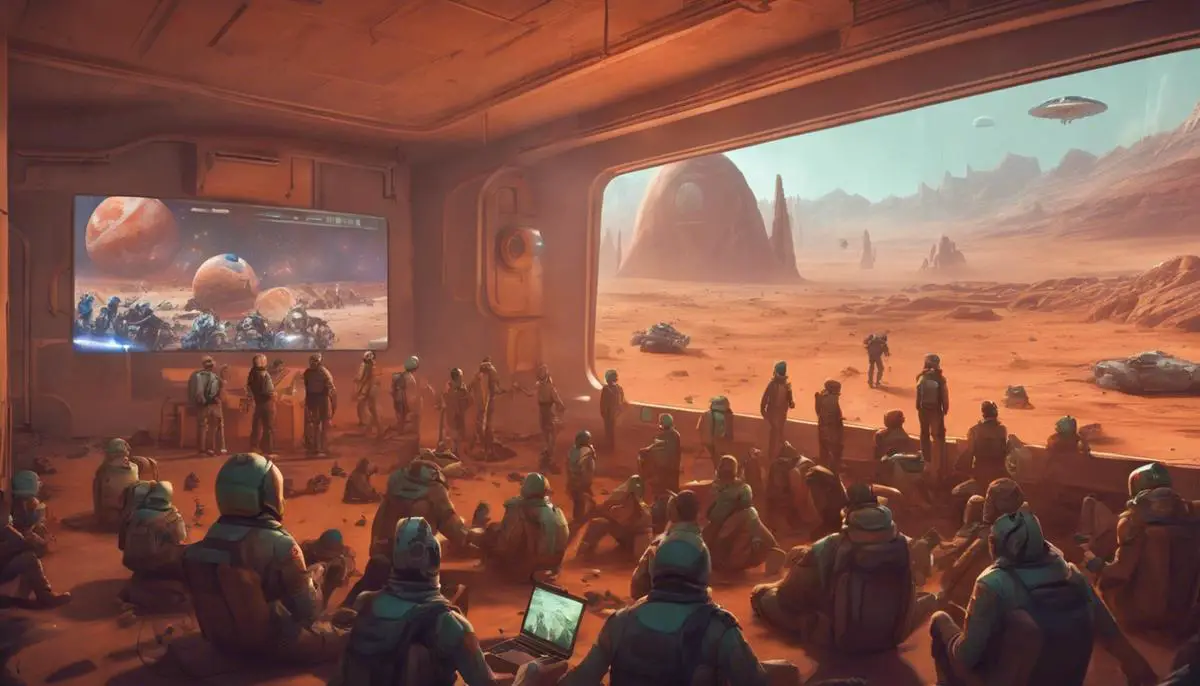
Infrastructure and Logistics
Hosting zero-gravity sports on Mars requires not only a reimagining of the rules of the game but also a profound overhaul of the infrastructure and logistics supporting these interstellar events. The erection of sports facilities tailored to Martian conditions, the adaptation of space habitats for recreation, and the hurdles inherent in sharing these extraterrestrial spectacles with an Earth-based audience pose a trilogy of challenges that must be surmounted to bring the vision of Martian sports to life.
Constructing sports facilities on Mars demands an architectural revolution — designs that navigate the tightrope between utilizing Mars's unique environmental assets and safeguarding against its perils. Bio-domed structures offer a promising solution, amalgamating robust, lightweight materials with self-sust

![]()
